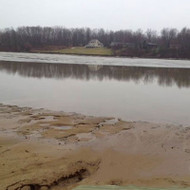
Beach Tested With MuckAway Over 2 Months

Neighbors Beach to Right Did Not Use MuckAway

Neighbors Beach to Left Did Not Use MuckAway
MuckAway Bacteria & Enzymes Study

Test: Lake Sanford, Saginaw, Michigan
Study Parameters & Applications:
The information in this study is designed to show how MuckAway's strains of bacteria and enzymes are tested in lab situations and synthesized to work in real-world situations with many outside environmental factors.
MuckAway tablets manufactured by Airmax were utilized in this study, and label application rates were used. MuckAway tablet application rates are as follows:
Up to 1,000 Square Feet = 1 Scoop Every 2 - 4 Weeks
In any pond or lake environment, sludge and odor build up from the natural organic breakdown of uneaten fish food, fish waste, plant waste, and fertilizer run-off. All of which are made up of fats, oils, greases, starch, and proteins. The laboratory tests found in this study show how the bacteria and enzymes found in MuckAway tablets work to degrade these compounds in aquatic environments and remove sludge.
Lake Sandford, Saginaw, Michigan
Test Duration: 2 Months Using 3 Applications
A customer started using MuckAway tablets to combat the black muck that had accumulated on the beach. Each year water levels in Lake Sanford dropped to handle the new water flow in spring. While the water level was down, it exposed the first 20 feet of the property's shoreline beach area. After applying the MuckAway tablets for 2 months, 7 feet of muck were removed. See the comparison pictures between the test beach and the neighbor's beach to the left:
THE DEGRADATION OF A TEST PROTEIN BY 2 STRAINS OF MUCKAWAY TABLETS
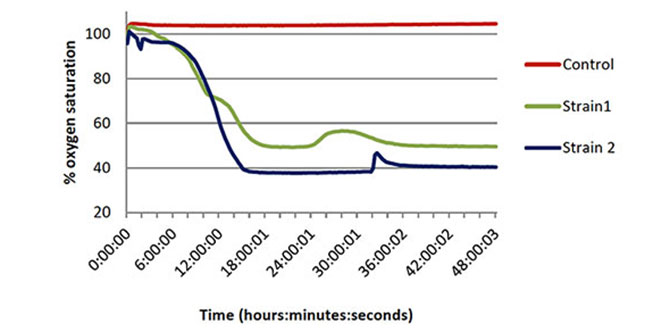
THE DEGRADATION OF STARCH BY TWO STRAINS IN MUCKAWAY VS/ COMPETITOR
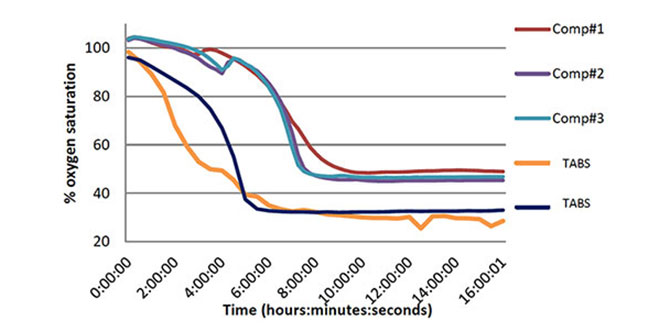
The graph above shows the degradation of starch (organic waste materials) by two strains in MuckAway tablets versus competitors' strains. As the substrate is degraded the oxygen saturation decreases. The MuckAways strains show better degradation of starch versus the competition.
THE DEGRADATION OF GLYCEROL (LIPDS/FATS) BY 2 STRAINS IN MUCKAWAY TABLETS VS. COMPETITOR
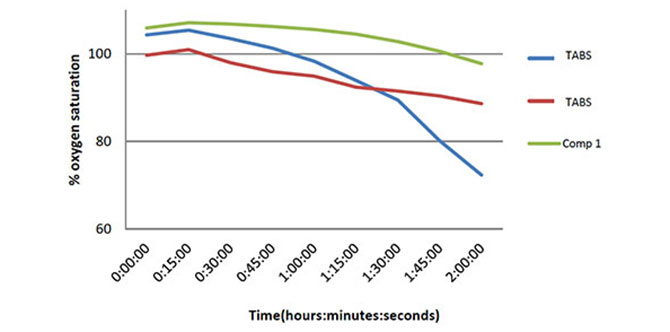
The graph above shows the degradation of glycerol (lipids and fats) by two strains in MuckAway tablets versus a competitor. As the substrate is degraded the % oxygen saturation decreases. The MuckAway strains show good degradation on glycerol versus a competitor.
Fatty compounds are found in fish foods, fish wastes, and water foul wastes. Breaking down these substances where sludge is present is critical when breaking down and removing sludge from pond and lake bottoms.
THE DEGRADATION OF STEARIC ACID FROM BEEF TALLOW BY THREE STRAINS IN MUCKAWAY TABLETS
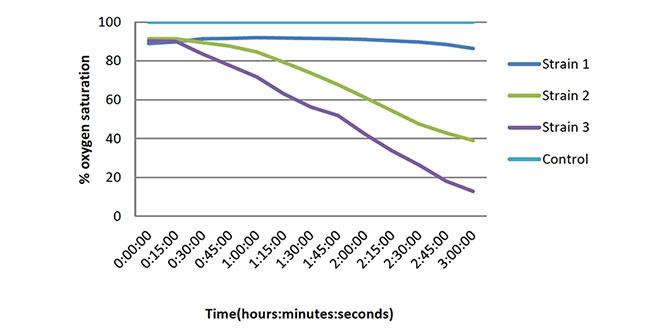
The graph above shows the degradation of stearic acid (fats from animals and plants) by three strains in MuckAway tablets. As the substrate is degraded the % duration decreases.
Technical Specifications For MuckAway Tablets
| Targeted Compounds | Cellulosic material, starches, surfactants, sludge-volume, malodors. |
| Bacterial Count | 2 Billion CFU's bacillus spores + pseudomonas. |
| Bacterial Type | Bacillus spore blend + pseudomonas. |
| Formula Properties |
Tan tablet with earthy odor.
(Available in Canadian approved (CB) formulation). |
| Performance Properties |
Effective pH Range: 4.0 - 11.0
Temperature Range: 45-120°F (7-49°C) |
| Packaging | 36 Pound Containers |
| Shelf Life | 24 Months (in original unopened container) |
